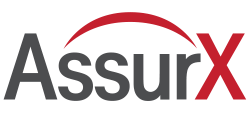June 16, 2021
When COVID-19 hit in 2020, companies around the world suddenly found themselves at the mercy of processes designed for the previous era of manufacturing. Not surprisingly, cloud QMS became a priority consideration as entire industries were upended with broken supply chains, changing production lines and processes, and a shift to remote work.
This article examines how COVID-19 is driving the transition from paper processes to cloud, and why cloud is now a key differentiator in the post-pandemic world.
The Shift to a Remote Workforce and Cloud QMS
When the pandemic hit, issues with remote work became stark when it came to quality management. Essential workers who made products could still work onsite. However, quality professionals tasked with monitoring product needed a way to do so from home. People could no longer walk down the hall to print out a document, sign it, make a hard copy, and get signatures from others. Any process that relied on in-person interactions or physical documents needed to be redesigned, and quickly.
As a result, the industry has seen a massive investment in digital transformation. COVID-19 is accelerating digitization by three to four years, according to a recent McKinsey survey.
Therefore, the implementation of a cloud EQMS became a game-changer for manufacturers that had to run a variety of processes remotely, including:
A cloud QMS provides a centralized way to keep processes on track and automatically move documents and tasks through structured workflows. In addition, it prevents issues from falling through the cracks—a critical capability for remote work.
Futhermore, replacing paper-based processes with a cloud QMS reduces the cost of poor quality. Reducing quality costs have become more important than ever during the pandemic, adding directly to the bottom line during times of economic turbulence.
Remote Audits are Here to Stay
In 2020, the number of onsite regulatory audits fell sharply, with many surveillance audits taking place remotely. Even as regulatory agencies like the FDA resume onsite audits moving forward, it appears some remote audits are here to stay.
May 2021 FDA guidance state that the agency will keep using alternative tools including remote audits to evaluate facilities, and request documentation and external audit reports from other agencies.
All of this highlights the critical importance of digital records. In the context of remote audits, digital records are critical to:
- Responding to documentation requests from the FDA and other agencies
- Preparing for remote audits by centralizing documents, records, test results and other key pieces of information
- Providing initial documentation for pre-review to reduce audit time
- Responding to audit findings and demonstrating timely follow-up
The silver lining is that some companies have found remote audits are more efficient, reducing audit time in cases while minimizing disruption and preparation costs.
Fear of the Cloud is Subsiding
Today, cloud adoption is growing rapidly, with Gartner forecasting more than 23 percent growth in 2021. There’s no question that the pandemic is at least one disruption behind this massive growth.
When SaaS solutions were released 20 years ago, companies were hesitant to jump on board. Now, organizations have discovered that a cloud QMS may actually reduce risks and costs by:
- Mitigating security risks: Third-party experts perform security testing more frequently, often making them more effective than internal teams at managing data security.
- Reducing IT footprint: Managing multiple solutions in one location (document control, employee training, CAPA, etc.), saves time and money over managing separate point solutions.
- Streamlining processes: Automation helps prevent human error and provides a framework for process standardization. Standardized processes improve efficiency, resolve issues faster, and accelerates new product introduction.
- Tracking and trending: Centralized reporting features available in a cloud-based EQMS make it easier to find and fix problems, increasing visibility into risk.
Supply Chain Shock and Risk
One of the most significant impacts of the pandemic is that supply chains have been stretched to their breaking point. To cope with continued shortages, manufacturers have to work with secondary and tertiary suppliers—many unproven and requiring additional oversight.
Within this context, a cloud EQMS has proven a differentiator, with supplier quality management tools allowing companies to:
- Automate incoming and receiving inspection processes
- Track and benchmark global supplier performance and certificates in one location
- Use supplier scorecards to get a quick view of risk level and compliance issues
- Communicate in near real-time with suppliers to resolve issues faster
- Link related functions within the EQMS to supplier management, including CAPA, audit management, and document management
Historically, necessity is the mother of invention. In this case, the pandemic has forced companies to reinvent how they do quality. Today, cloud QMS is available to address the challenges of the new normal. When it comes to adapting to future industry uncertainty, a flexible, automated EQMS is essential to manage issues with minimal disruption.
Related Articles:
Supplier Quality: A New QMS-Based Approach



